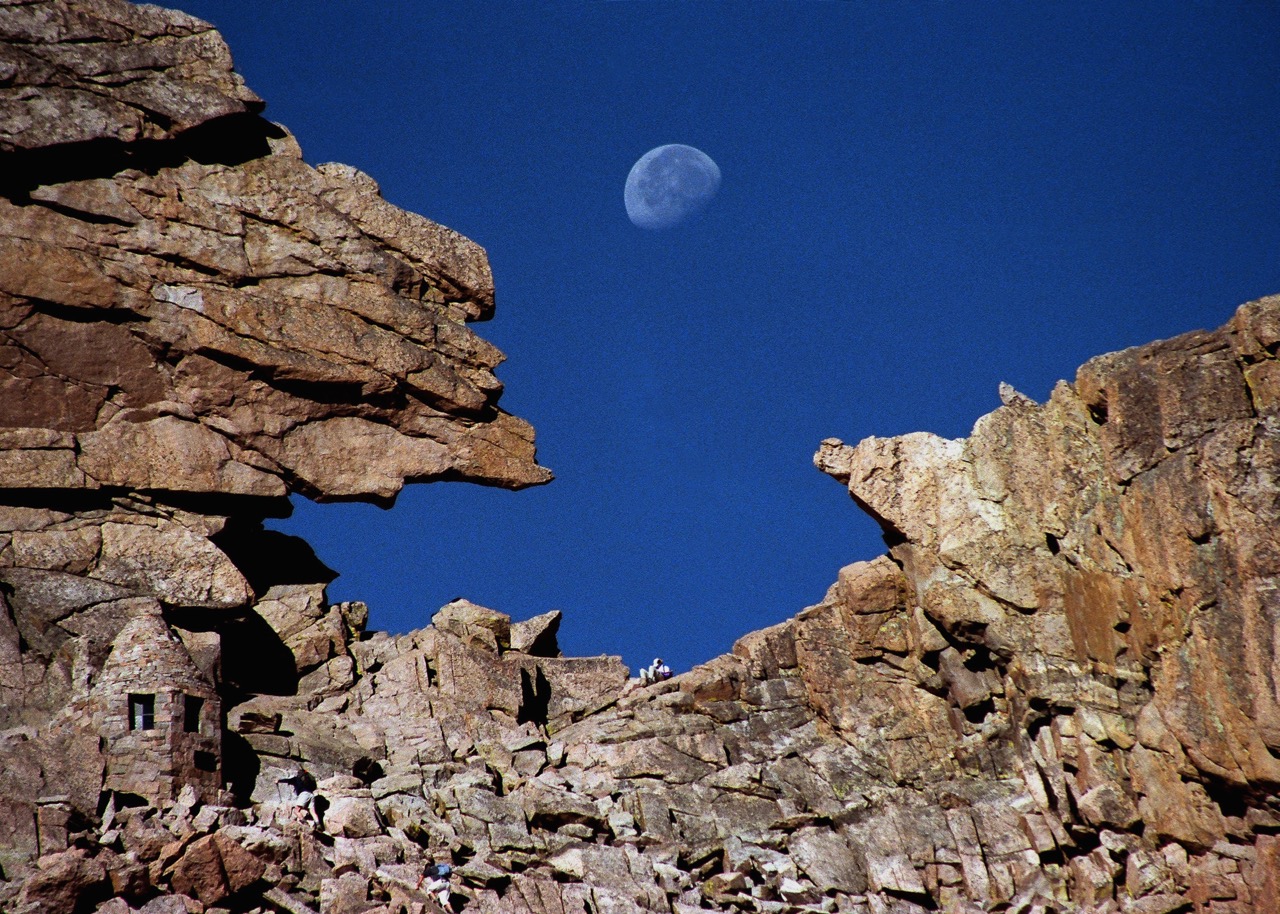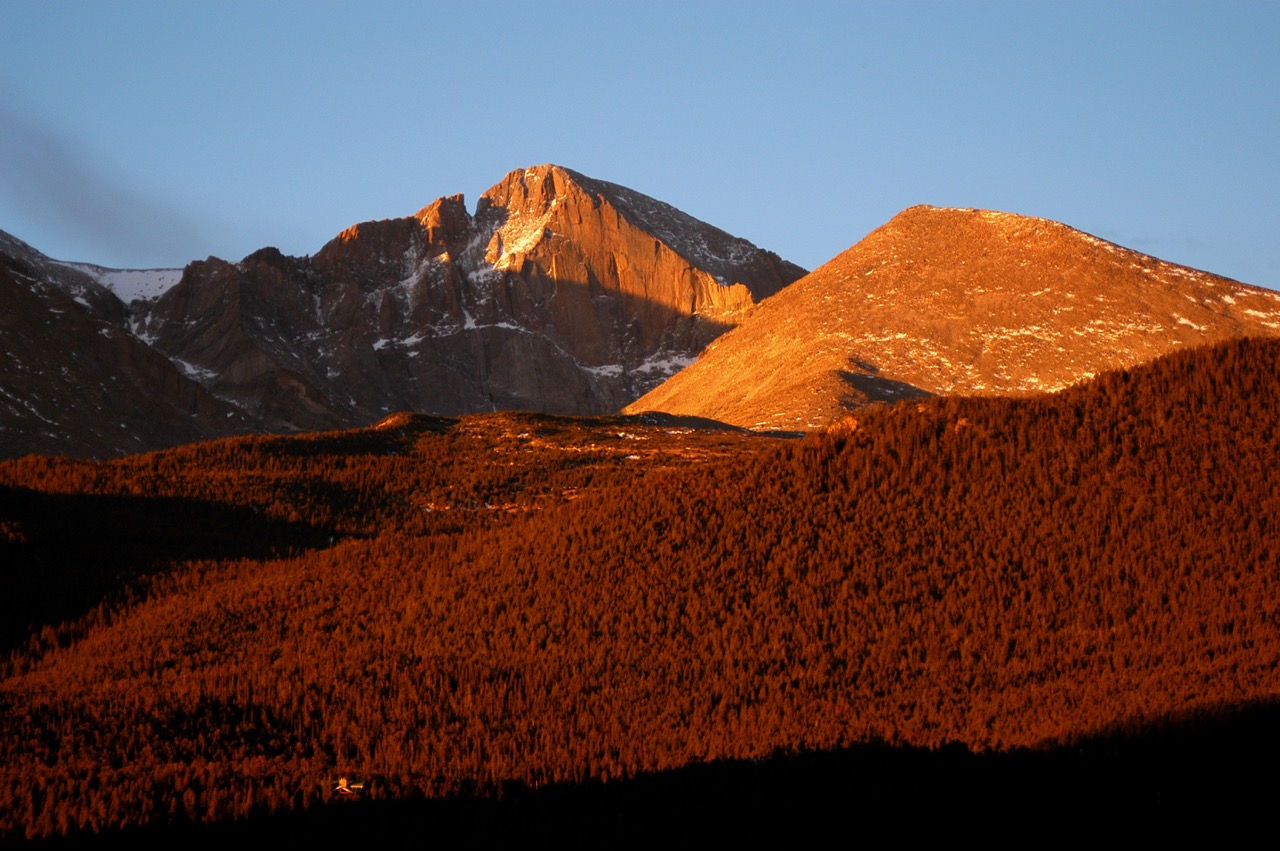Climbing a fourteener — a mountain over 14,000 feet — has landed a spot on many bucket lists and Colorado has over 50 to choose from. Adventure seekers come to the Rocky Mountains every year in the hopes of crossing this feat off their list. Long’s Peak possibly draws the most crowds but it is also notorious as the most dangerous. According to a National Park Service survey, as many as 35,000 people attempt it each year and less than 10,000 reach the summit.
The Mountaineers of Seattle created a list of 10 essentials for hiking that the Colorado Mountain Club adopted. This list is the perfect resource — both before and during the hike — to guide you up your first fourteener.
1. Navigation
Not every fourteener is created equal. Both Torreys and Grays Peaks can be completed in as little as six hours. Long’s Peak, on the other hand, can take upwards of 15 hours. Besides time and distance, some peaks have defined trails while others have more social trails marked by cairns. Knowing the mountain and its route to the top is a crucial first step.
Study a trail map beforehand. Pack the map and a phone — most now have a built-in compass and GPS — for the big day. Download AllTrails onto your phone to have everything in one. The app offers maps of trails that can be searched by length, rating and difficulty. Use the maps offline in conjunction with your phone’s built-in GPS so you always know where you are. The app also tracks your pace, distance and elevation gain.
2. Illumination
Start times for fourteeners are usually well before dawn. Some hikers hit the trailhead by 11 p.m. to be at the summit for sunrise. The only light at that time of night comes from the moon and stars. This makes some form of illumination mandatory. Wearing a headlamp will make your trail easier to see and your trek more enjoyable.
Know your route and the estimated round-trip time of your fourteener of choice to know how early to start to be off the summit by about noon.

The trail coming down from Long’s Peak’s Boulder field. Photo by Chloe Dascoli
3. Hydration
Start the hydration process several days before attempting your climb. Drinking two Nalgenes per day is a good rule of thumb at high altitudes. Take more than you might think necessary for the big day. Oxygen levels decrease the higher in elevation you climb. The best way to help your body is to drink plenty of water.
A water bladder is a better option than water bottles. Take a pack like Camelbak’s M.U.L.E. that can carry your water and any other supplies you may take. Know that one bladder may not be enough so take an extra water bottle, bladder or water purification tablets.
4. Nutrition
Depending on your weight, hiking can burn anywhere from 400 to 600 calories per hour. That means on a climb like Long’s you can burn upwards of 9,000 calories. Without proper nutrition, your body won’t be able to carry you to the summit. Foods high in protein and carbs are good options.
Pack enough to eat a snack about every hour. Take along some protein and nutrition bars, beef jerky or trail mix. You can also make your own gorp mix.
5. Sun Protection
Many people underestimate the intensity of the sun at higher altitudes. If you don’t want to be miserable for half of your hike pack at least SPF 15 sunscreen, a hat and SPF chapstick. Not only are the sun’s rays more intense but the air is dry. Your lips and skin will thank you for the protection. It’s a good idea to reapply every two hours.
6. Insulation
Mountains create their own weather. The temperature at the trailhead may be in the 40s or 50s when you start but the temperature at the top can drop to the 20s with a wind chill in the teens. Don’t be the person who has to turn around because they forgot to pack an extra layer or gloves.
Start with a base layer made of merino wool, polyester or polypropylene. Cotton holds moisture and clings to the skin making it a less desirable option. Then invest in a packable, lightweight layer. A light down jacket would be a good option. A jacket like this won’t take up too much space in your pack and will provide warmth for colder temperatures.
You won’t get far if you’re feet are uncomfortable either. Cotton applies to socks too. Don’t do cotton socks if you care about the health of your feet. Merino wool with light to medium cushion will keep your feet happy. Make sure you have sturdy shoes with good support. Tip: Support isn’t found in the height of the ankle. Try to twist the sole of the shoe to test its support. High ankles on hiking shoes are more for keeping rocks and dirt out.
7. First Aid
Everything — from a minor trip to a sprained ankle — happens on the trails. Be prepared for most accidents by adding a first aid kit to your pack. Some essentials to include are moleskin, band-aids, gauze, disinfectant, adhesive tape and ibuprofen or a similar pain medication. Pre-made kits are easy to grab and go.
8. Repair Kit
A basic multi-tool knife can be the answer to many problems encountered on the trail. A small multi-tool with a blade, scissors and tweezers can be a life saver. Some knives have accessories — like corkscrews and bottle openers — that you’ll never use on the trail but are fun to have anyways.
9. Fire
Having a source of fire may not be crucial to successfully complete your first fourteener but when anything can happen on the trail it’s better to be safe than sorry. A small lighter good to have but take some waterproof matches just as back up.
10. Shelter
When the weather can change without warning it’s a smart idea to have an emergency form of shelter. Something as basic as a large black trash bag can provide protection from wind or rain. For something one step up go with the original emergency blanket developed by NASA.
Plan to be off the summit no later than noon. “Start early enough to be back to tree line before the afternoon thunderstorms,” said George Hockman – a mountaineer and guide with over 10 fourteeners under his belt. The last thing you want is to have to use your emergency shelter because you didn’t start the descent early enough.

Long’s Peak’s Keyhole. Photo by Jamie Palmesano
Bonus Tips:
- Go steady – especially on the return trip. Most accidents happen when people rush. Many hikers think that reaching the top is the hardest part. More accidents happen coming down the mountain than going up.
- Don’t feel bad if you need to turn around. The mountain isn’t going anywhere and you can always try again tomorrow.
- Keep your pack light. It’s important to have all the essentials and no more. The heavier your pack is the harder the climb will be.
- Most importantly, have fun. Summiting a fourteener isn’t a competition. It’s a personal life goal. Do it at your own pace and in your own time. Look around and fully take in the imposing beauty of the mountains.
Choosing a First Fourteener
“Choose a mountain without many loose rocks, exposure and steep drop-offs,” said Hockman. “Both of which Long’s is noted for.” Hockman recommends starting with Mt. Bierstadt or Gray’s and Torrey’s Peaks — which can be completed at the same time. For a better chance at a successful summit start with one of those fourteeners or choose from the other 10 easiest in the list below.
For a full list of easy fourteeners go here.
Mt. Sherman – 14,036 feet
Elevation Gain: 2,400 feet
Round-trip Distance: 6 miles
Round-trip Time: 8 hours
Nearest Town: Fairplay
Handies Peak – 14,048 feet
Elevation Gain: 3,600 feet
Round-trip Distance: 8 miles
Round-trip Time: 6 hours
Nearest Town: Lake City
San Luis Peak – 14,014 feet
ElevationGainn: 3,600 feet
Round-trip Distance: 14 miles
Round-trip Time: 14 hours
Nearest Town: Gunnison
Grays Peak and Torreys Peak – 14,270 feet
ElevationGainn: 3,000 feet
Round-trip Distance: 8 miles
Round-trip Time: 6 hours
Nearest Town: Silverplume
Mt. Evans – 14,264 feet
Elevation Gain: 1,400 feet
Round-trip Distance: 5 miles
Round-trip Time: 4 hours
Nearest Town: Georgetown
Mt. Democrat, Mt. Lincoln and Mt. Bross – 14,286 feet
ElevationGainn: 3,300 feet
Round-trip Distance: 6 miles
Round-trip Time: 8 hours
Nearest Town: Alma
Mt. Bierstadt – 14,060 feet
Elevation Gain: 2,400 feet
Round-trip Distance: 6 miles
Round-trip Time: 6 hours
Nearest Town: Georgetown
Huron Peak – 14,003 feet
Elevation Gain: 3,200 feet
Round-trip Distance: 8.5 miles
Round-trip Time: 6.5 hours
Nearest Town: Buena Vista
Mt. Elbert – 14,433 feet
Elevation Gain: 4,400 feet
Round-trip Distance: 10 miles
Round-trip Time: 9 hours
Nearest Town: Leadville
Quandary Peak – 14,265 feet
Elevation Gain: 3,300 feet
Round-trip Distance: 6 miles
Round-trip Time: 6 hours
Nearest Town: Breckenridge


